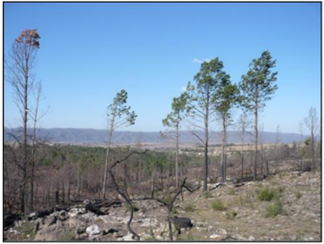|
I am a first-year PhD student at McGill University advised by Dr. John Stix. My research interests are in geological hazards, remote sensing, environmental science and landscape evolution. My PhD research centers on leveraging drone technology to investigate volcanic systems. My approach involves collecting a wide array of data, such as volcanic gas emissions, thermal infrared imaging, photogrammetry, and LiDAR, with the aim of comprehensively evaluating volcanic eruption hazards. I completed my Master's degree in Geology at the State University of New York at Binghamton, where I was advised by Dr. Jeffrey T. Pietras and funded as a Fulbright Scholar. My masters thesis focused on the sedimentology and XRF-based chemostratigraphy of the Trenton Group carbonates in the Taconic Foreland Basin in New York. For my undergraduate dissertation I studied the effects of wildfires on soils from the Calamuchita Valley, Argentina. After graduating with a BS in Geology (honors) from the National University of Cordoba, I was a Junior Geologist at Represas Patagonia. There, I enjoyed combining field measurements and remote sensing techniques to monitor the stability of the slopes of the Condor Cliff Dam and prevent potential landslides. Outside of the office, you'll find me hiking, swimming, or cooking Argentinian dishes and pastries. Email / CV / Google Scholar / Github |

|
|
|
|
|
Gustavo Villarruel, Jeffrey T. Pietras Masters Thesis The Trenton limestones were deposited along with volcanic ash layers in a foreland basin adjacent to the Taconic orogen during the Ordovician. By analyzing the lithology and XRF-based elemental data of five cores from the Mohawk Valley, New York, we performed a paleoenvironmental reconstruction of the carbonate shelf where these limestones and volcanic sediments were deposited. Our interpretations of ten lithofacies, along with a suite of elemental proxy data for bulk mineralogy and paleo-redox conditions, indicate two major flooding events of the carbonate shelf and substantial changes in fault-controlled paleobathymetry and sediment provenance. |

|
Gustavo Villarruel, Gabriela Sacchi, Vanesa Zampar Published at Journal of the School of Exact, Physical and Natural Sciences of the National University of Cordoba Water repellency is a property with critical implications on soil erosion, and very sensitive to change after wildfires. This research analyzed the physical (water repellency, granulometry, color) and chemical (pH and organic matter) properties of pre- and post- fire soils, as well as soils heated under controlled laboratory conditions. This allowed us to characterize the changes in hydrophobicity that occur with increasing temperature and determine their causes and the soil temperature during the fire event. |
|
Website template by Jon Barron |